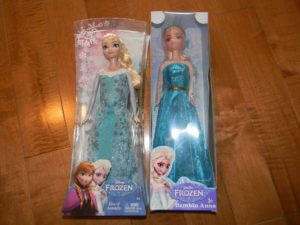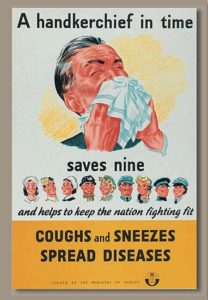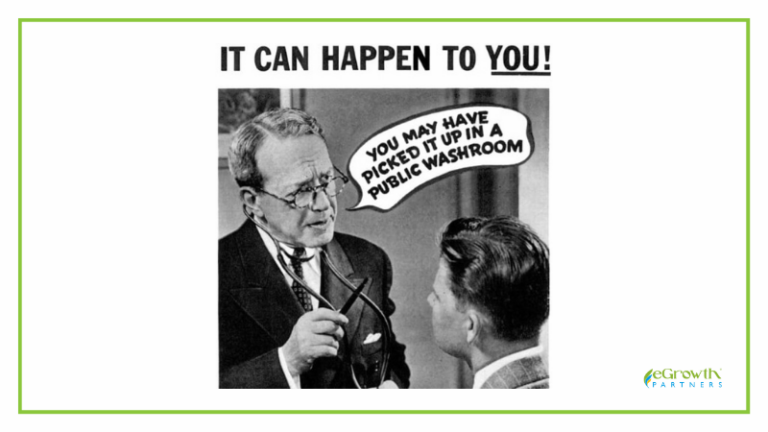If you’ve been selling for a while, you’ve probably run into the idea of co-mingling. You may have even gotten an invitation from Amazon to co-mingle some of your FBA inventory with theirs. Sounds cozy, right? What could go possibly go wrong? Well, it is a lot like those health films you used to watch in school. Yep. Co mingling can lead to an inventory disease – gasp! The problem is so bad right now that the WSJ wrote about it this weekend. And they normally love Amazon.com.
So what is co mingling? Basically, you send in naked inventory to Amazon without stickers. They mix your stuff in with theirs (blush). When someone orders that product, the Amazon workers grab the first one off the shelf and toss it on the conveyor belt. They do not make any judgment or decision about the product (totally amoral!).
The sellers who co-mingle most are generally buying large quantities of merchandise (perhaps from a wholesaler) which is being sent directly to the Amazon warehouse. If you want to learn more about how it works.
Pros
- Easy for seller – no stickers required
- Can ship inventory directly from wholesaler to Amazon warehouse without the extra step of needing to put on individual stickers
- Saves money on shipping
- Saves time
- If you are buying goods from a manufacturer, your product is the same as the one Amazon is selling
- Allows Amazon to ship products to customers faster and less expensively
Cons
- No control over product received by buyer
- Other sellers may not be as scrupulous as you
- Chance for knock-offs and fraud is much higher
- Sellers are not held responsible for their inventory – no accountability
- Buyers could ding you for someone else’s mistake and you have no recourse
- Manufacturers are forced to restrict their products from third-party sellers in order to protect the integrity of their brands

Please note: Since this post went live, I’ve learned that I was wrong about this paragraph. Amazon does not co-mingle without our permission. See Paul’s comments below. I’m grateful to have this explained to me and all of us which is why I left this paragraph in here: And to add to the shame, you might be co-mingling without even knowing it – gasp! For certain very popular products, Amazon co-mingles the inventory anyway. You have your sticker on back, but they just grab the closest one to fulfill. I had this happen on more than one occasion where a buyer returned a “defective” toy. I had it returned to me to see what had happened and to see if the product could actually be re-sold on Amazon, eBay or CraigsList. I was puzzled to realize that the item I got wasn’t even mine! It was some other seller’s sticker on the bottom. (One time I also had a product returned that I don’t even sell – go figure.)

Seller Robbie Moon posted pictures earlier this week of Frozen dolls he had ordered from Amazon (not a third-party) that were so clearly knock-offs that anyone could tell. It wasn’t subtle. He thought that Amazon was selling knock-offs. Most likely, Amazon was co-mingling and had some fakes in the mix. The question asked online was “don’t the workers notice?” Maybe they do, but they don’t have the authority to do anything about it. They just pull and pack. They can only pull out damaged inventory. It is up to us to send in good merchandise. The bad sellers out there are hurting all of us.
Stories like these and the WSJ story are why I don’t send in naked inventory. While I can’t stop Amazon from co-mingling my stuff, I at least have some recourse if they do – my stuff was stickered and I can prove it was not a knock-off. If a buyer complains, I can find out immediately from the FNSKU whether they are actually holding my product in their hands. My sticker is my inventory prophylactic.

Amazon will get a handle on this and we may or may not be happy with their solution. Right now they are pulling third-parties out of certain brands – a move that none of us likes. Just this week they started requiring that sellers be pre-approved to sell in Beauty, Health, Personal Products and Grocery. This is a clear move to get a handle on the bad sellers and you can bet that some of the bad apples will be gone shortly.
For those of us with good metrics and an established history, we were grandfathered in. If you were selling in those categories and aren’t sure if you are still approved, look up “restricted categories” in SellerCentral’s “Help.” Click on grocery, go to the very bottom of the page that comes up to apply. If you are approved, it will tell you so. Check in health, beauty and personal products as well.
Regardless of your selling categories, I strongly suggest you protect yourself by stickering your inventory. Amazon offers a service of 20 cents a unit to sticker your items for you once they get to the warehouse. See the comments below for the URL.
I mentioned my blog post to Bob Willey in passing and he said “add me to the list of people against co-mingling.” So don’t just take my word for it!
Just remember my friends – it can happen to you!
All that being said, I would love to hear from sellers who co-mingle and like it. Perhaps there is another way to protect yourself from problems besides abstinence?




